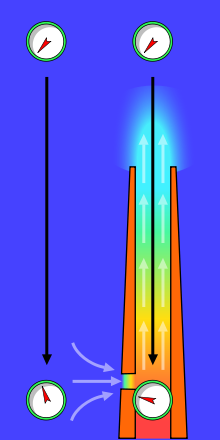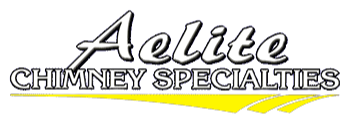When you live in Chicago, freezing cold temperatures in the winter is a fact of life. Weather predictors have said that this coming winter will be even colder than the past few brutally cold winters we have experienced. As the temperatures drop, heating bills rise, unfortunately. At Aelite Chimney Specialties, we like to help our customers save money as well as heat their homes more efficiently. We would like to focus on one of those reasons why heating costs can be so expensive: the stack effect, or also known as the chimney effect. Having to do with the physics of air pressure, the stack effect causes a battle between cold outside air and warm inside air in your house. It can also be responsible for smoke entering your home and for difficulties even starting a fire in your fireplace. We would like to tell you more about the stack effect and how it can be avoided.

Image by Kimbar under the Creative Commons license.
What is the stack effect?
As explained by the Wood Heat Organization, warm air inside your home wants to rise when the outside air is significantly colder, and this causes differences in the pressure inside your home. The stack effect occurs when the air pressure on the lower level of your home is lower, or negative, and the air pressure on the upper floors of your house is higher.
How does the stack effect impact my chimney and venting system?
Your chimney is one of the main areas where cold air leaks into your home, which worsens the air pressure balance. However, the stack effect creates enough negative air pressure to force a cold backdraft in a fireplace chimney which is cooler than room temperature. Trying to light a fire in a chimney with a backdraft will cause smoke to flow into the room instead of out the chimney.
What are the best ways to avoid chimney and fireplace problems related to the stack effect?
According to the Wood Heat Organization, the two main chimney stack effect-related problems can be avoided, and they provide the following solutions:
- When No Fire Is Burning, Cold Air Is Leaking Into the Home Through the Chimney. If this situation occurs, the stack effect is causing a backdraft of cold outdoor air out of your fireplace. You may also notice unpleasant smells from the chimney exhaust air that has entered your home through the fireplace. A large number of chimneys have an exterior wall because that design saves space; however, a solution to prevent the stack effect is to install the chimney inside your home to keep it in a warm environment. Aelite Chimney Specialties can show you many designs and styles of interior chimneys we can install in your home that will add both warmth and beauty to your living space.
- When You Open Your Fireplace Doors, Smoke Blows Into the Room. The stack effect restricts your chimney’s exhaust flow, and opening the doors to your fireplace or stove will cause trapped smoky air to come out of the chimney. The solution to this problem is having a straight chimney. Chimneys with 90 degree turns and offsets have places where smoke can get trapped; straight chimneys make it easier for smoke to exit.
Have any questions about the stack effect? Contact Aelite Chimney Specialists to learn more about that and other winter-related chimney problems from our expert staff.
